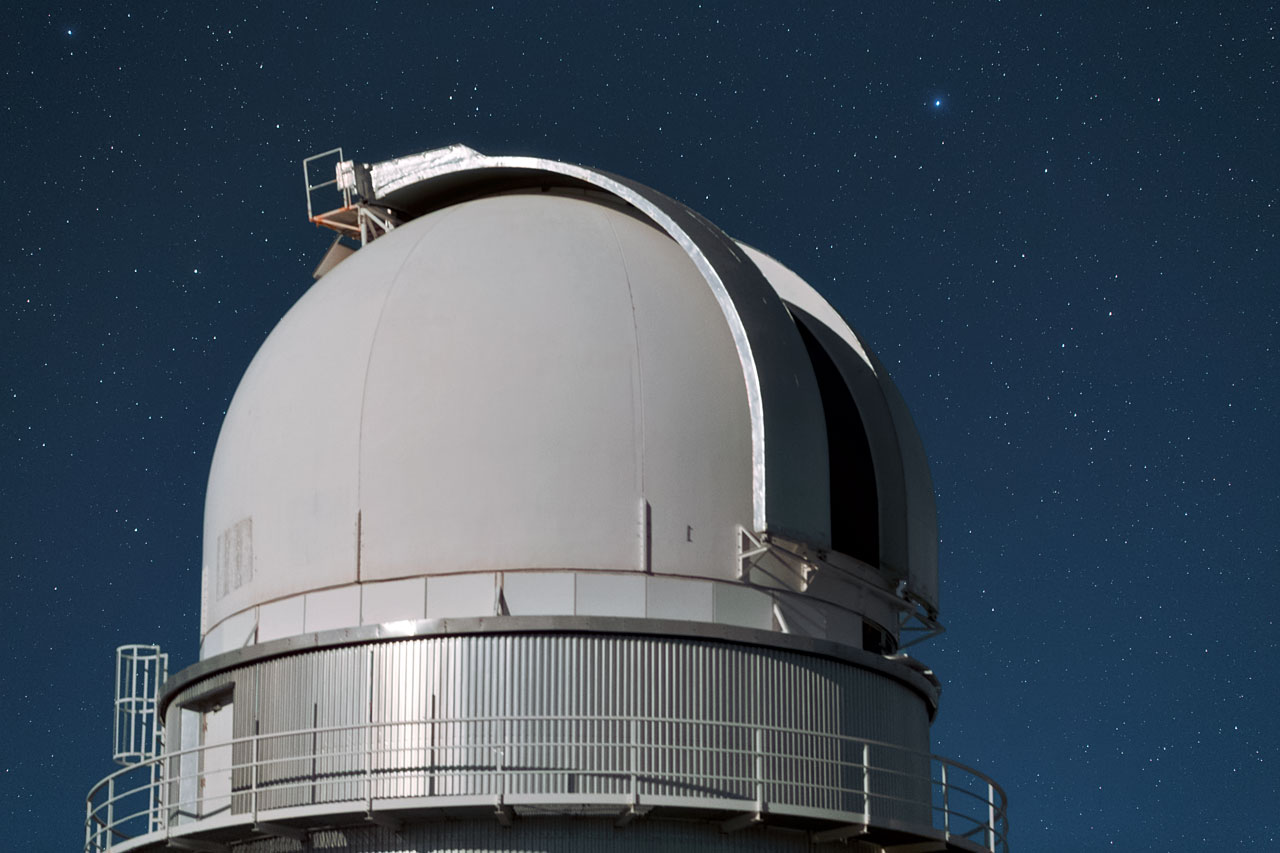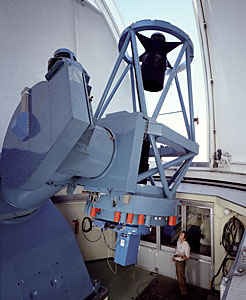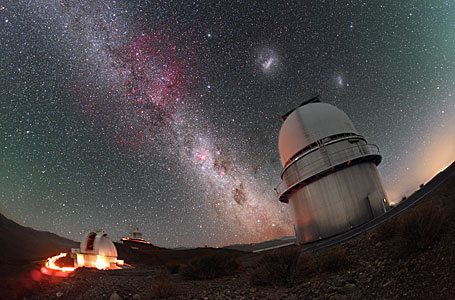Danish 1.54-metre telescope
The Danish 1.54-metre telescope, built by Grubb–Parsons, has been in use at La Silla since 1979. It was completely overhauled in 1993 and is now equipped with the Danish Faint Object Spectrograph and Camera instrument. The telescope has allowed astronomers to make several first discoveries. In 2005 astronomers showed that short, intense bursts of gamma-ray emission most likely originate from the violent collision of two merging neutron stars, ending a long debate (eso0533). In 2006, astronomers using a network of telescopes scattered across the globe, including the Danish 1.54-metre Telescope, discovered an exoplanet only about five times as massive as the Earth, and circling its parent star in about ten years (eso0603). This telescope has also been used to produce many impressive astronomical images.
Science goals
Gamma Ray Burst (GRB) follow-up, photometry, comets
Links
- All-sky camera live
- More information is available in this article from The Messenger and on the science pages.
LIVE all-sky camera

All Sky camera near the Danish 1.54-metre telescope at La Silla. More information on this link
Danish 1.54-metre telescope
|


